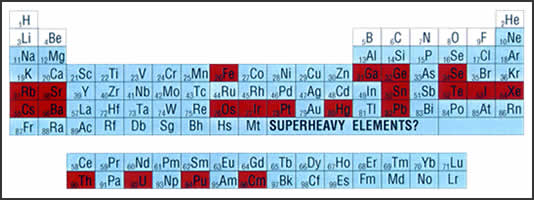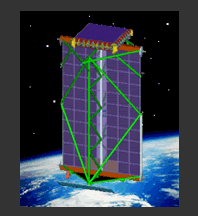| The
HNX Science
The primary objective of HNX is to determine the origin of Galactic Cosmic Rays (GCRs), the enigmatic population of relativistic nuclei and electrons that
fills interstellar space. In spite of many decades of research, we still know relatively little about the astrophysical source of galactic cosmic ray nuclei. We do not know if the source material is old or fresh, hot or cold or even whether it is in the gas or solid phase.
Specific questions that we can address with HNX are: What is the age of GCR nuclei since nucleosynthesis? What is the injection mechanism for the GCR accelerator? What is the mix of nucleosynthetic processes that contribute to the GCR source? HNX will answer these questions by measuring the abundance of every individual element in the periodic table from neon through the actinides-thorium, uranium, plutonium, curium. and perhaps beyond.
HNX utilizes two high-precision instruments: the
Extremely-heavy Cosmic-ray Composition Observer (ECCO), a giant array of passive
glass-track detectors, and the
ENergeic Trans-Iron Composition Experiment (ENTICE), a large electronic detector system. They cover overlapping ranges of the periodic table with ENTICE covering the range of atomic number (Z) from
Z= 10 (neon) to Z=83 (bismuth) and ECCO covering the range Z=70 (ytterbium) to Z=96 (curium) and possibly beyond. Figure ES-
1 illustrates the range of elements for which HNX will provide definitive measurements.
The primary HNX objective, to understand the origin of cosmic rays, directly addresses one of the Research Focus Areas in NASA's 2000 Space Science Enterprise Strategic Plan. The Board of Physics and Astronomy of the National Research Council Space Studies Board report titled "A Science Strategy for Space Physics" recommends the measurement of "elemental abundances through the actinides to probe the plasma regions where the nuclei are synthesized and to measure the time scales involved." The National Academy Report titled "Connecting Quarks with the Cosmos: Eleven Science Questions for the New Century" has two of eleven questions that
are directly relevant to HNX. They are: 1) "How do cosmic accelerators work and what are they
accelerating?" and 2) "How were the elements from iron to uranium made?" This investigation falls under the NASA Structure and Evolution of the Universe science theme.

Figure ES - 1. HNX will
determine the nature of the GCR by measuring its elemental
fingerprint--the abundances of all elements in the periodic table from the
Ne through the actinides and perhaps beyond; shown in blue. Key elements
that will determine the state and age of the GCR source are shown in red.
|



